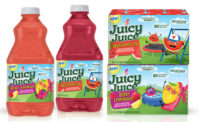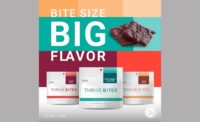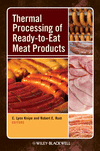Lower-Calorie Products Thrive
New study finds that majority of food and beverage sales growth stems from lower-calorie options

A recent study performed by the Hudson Institute found that although supermarkets are gaining the majority of their food and beverage sales growth, 59 %, from lower-calorie products, they are not fully capitalizing on the growing demand for lower-calorie products found by recent CPG and restaurant industry studies. It is clear that traditional, full-calorie items are no longer carrying the day, and supermarkets can tap tremendous sales growth by making more lower-calorie foods available and promoting them to shoppers. Past research also has shown that new, lower-calorie products were more than twice as likely as traditional higher-calorie products to remain available at retail stores after five years, providing more incentive for retailers to prioritize them.
Our study also found that lower-calorie sales growth is outpacing higher-calorie sales growth in both food deserts and non-food deserts, signifying that consumers, regardless of where they live or shop, are increasingly seeking out lower-calorie alternatives, and represent a market ready for change. Retailers in food deserts should seize the opportunity to make lower-calorie foods and beverages more available, and promote them more vigorously. Retailers and manufacturers together need to place greater focus on lower-calorie versions of products that contribute the most calories to children’s and adolescents’ diets or they will likely face even stronger headwinds from consumers, regulators and public health advocates. The business case is compelling, as demonstrated by Hudson Institute’s previous studies, that shifting to lower-calorie versions is tied to higher growth rates. Retailers must also consider modifications to their current merchandising and promotional practices, such as increasing lower-calorie product prominence on shelf, in feature ads, on displays, and in check-out lanes, to address both challenges and opportunities related to selling healthier products for children and their families.
Private-label brands are making significant strides in the proportion of lower-calorie sales, but they still lag the brand-name labels. By introducing and generating in-store visibility of more lower-calorie versions of the most popular products, retailers can realize huge sales potential.
Lower-Calorie Share of Sales and Sales Growth
Our research examined two key measures: dollar sales and dollar sales growth. We found that the lower calorie foods’ share of total dollar sales was higher in supermarkets than for CPG companies or restaurants. However, supermarkets were not deriving as much sales growth from the lower-calorie items as either CPG companies or restaurants, for which virtually all of the sales growth was driven by lower-calorie options.
Sales in Food Deserts Findings were similar when we explored stores located in food deserts, lower-income areas where residents have limited access to healthy, affordable foods. Lower-calorie dollar sales grew faster than higher-calorie dollar sales both in food deserts and outside food deserts. Nevertheless, lower-calorie share of total dollar sales lags higher-calorie item sales in food deserts . This gap is equivalent to $500 million in lost revenue from lower-calorie items for the stores located in food deserts.
Products Contributing the Most Calories to Children’s Diets
Among the categories of foods and beverages found by Reedy and Krebs-Smith19 to contribute the most calories to children’s diets (e.g., grain-based desserts, caloric beverages, pastas and pizza), the lower-calorie share of total sales hugely lags sales for higher-calorie versions (Figure 5). Similarly, growth in lower-calorie product sales has been substantially outpaced by the growth in sales of higher-calorie options. These trends are in contrast to the overall progress being made in the sales growth of lower-calorie products.
One potential explanation for these findings is that availability of lower-calorie versions of products contributing the most calories to the diets of U.S. children and adolescents significantly trails availability of lower-calorie products across all product categories analyzed.
Methodology Summary
To address these objectives, we utilized Nielsen Scantrack data to analyze the foods and beverages sold by the three largest U.S. supermarket ownership groups, who together own 26 “banners” or supermarket chains. Supermarkets are defined as traditional grocery stores with measured sales of more than $2 million dollars annually. Other retail outlets selling food and beverage products, such as corner stores, convenience stores, drug stores and dollar stores, were not included. Banners represent the different brands that each of the supermarket ownership groups operate under. Annualized food and beverage product sales for the supermarket chains analyzed totaled $137 billion for the twelve months ending December 31, 2013. This figure represents 45 % of the U.S. supermarket industry’s total dollar sales of those product categories included in the study.
Data from 6,000 store locations, in 202 separate food and beverage categories, and from 275,000 food and beverage stock keeping units (SKUs) were analyzed. Private-label brand analyses were performed on more than 15 banners. The study compared sales data for the twelve months ending December 31, 2013 with the twelve-month period ending December 31, 2009.
Nielsen Scantrack provided information on dollar sales, unit sales, distribution and calories per serving (based on nutritional information required by the Food and Drug Administration). For the small %age of food and beverage categories that did not have nutritional labeling information, we used data from public websites which listed calorie counts. The criteria for “higher-calorie” and “lower-calorie” were developed in conjunction with the Nutrition Coordinating Center at the University of Minnesota.16 More than 275,000 individual items (SKUs) from 202 food and beverage categories were classified in a binary fashion as either higher-calorie or lower-calorie as a prelude to analysis. Actual item calorie counts or averages were not calculated as part of this study. “Food deserts” were defined based on U.S. Department ofAgriculture (USDA) criteria.17 Standards set forth by Reedy and Krebs-Smith18 were used to define the food and beverage categories that contribute the most calories to the diets of U.S. children and adolescents. A detailed methodology appears at the end of this report.
Looking for a reprint of this article?
From high-res PDFs to custom plaques, order your copy today!








